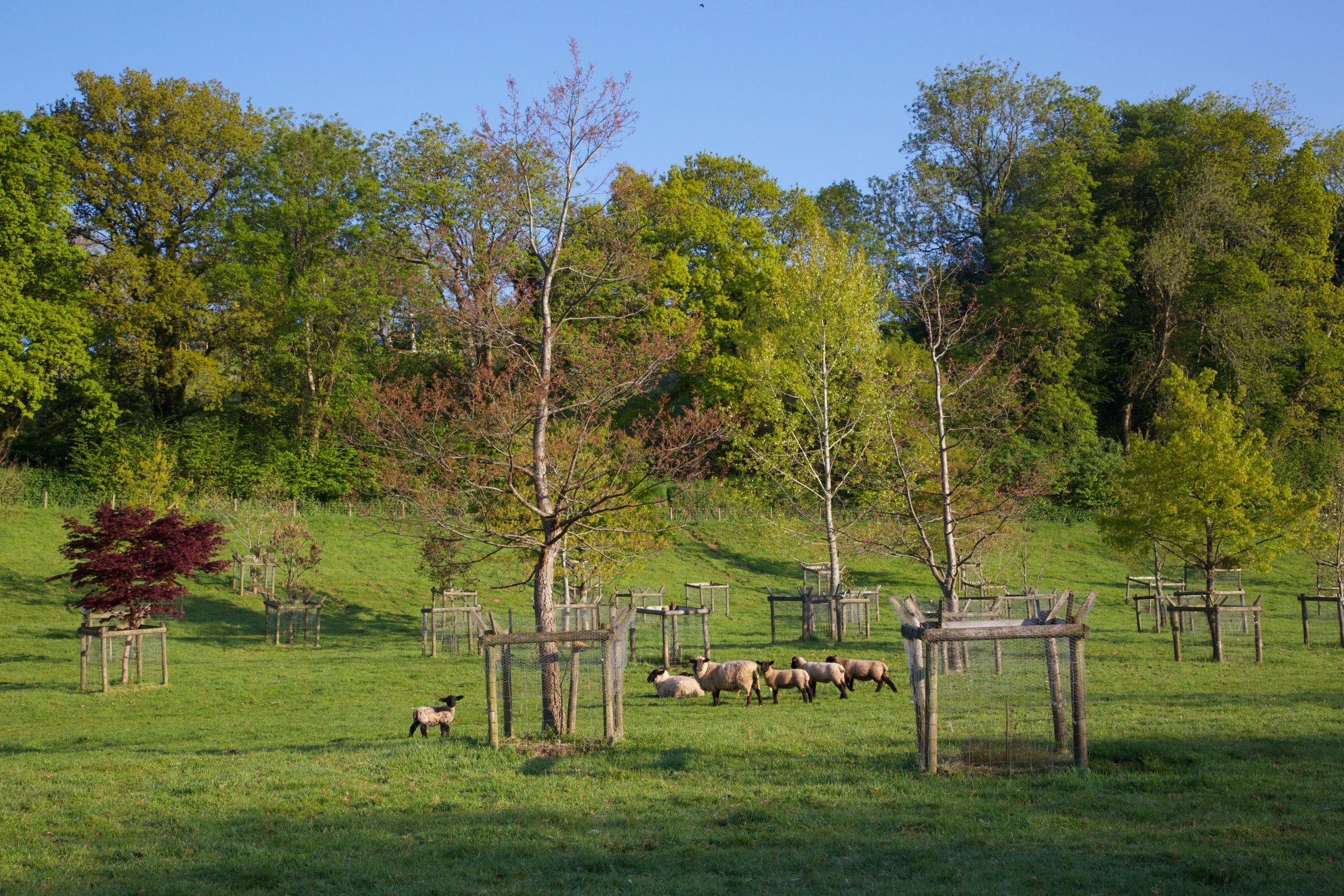Chevithorne Barton – the Quercus legacy

Known for opening some of the most beautiful private gardens in the UK, the majority of the National Garden Scheme’s 3,500 gardens include trees as a fundamental part of their design. Trees provide shape and structure, shade and sustenance, they dance with blossom in the spring, dapple shade in the summer, are bountiful with fruits in the autumn and in winter frame our vistas and landscapes. All play a part in carbon capture, noise reduction and the cooling of our towns and cities.
Among the thousands of gardens that the National Garden Scheme opens are over 150 gardens where trees form an integral part of or particular focus of their design. There are the gardens of Luton Hoo and Southill Park landscaped by Capability Brown in the 18th Century, the woodland gardens of Fullers Mill, Suffolk and Parish’s House, Bath and the trees that tell stories like the large sequoia in a Leicestershire garden damaged by a bomber in World War II and the 250 year old Lucombe Oak in a garden in Bristol. There are also national collections of trees that open under the National Garden Scheme, one is Chevithorne Barton in Devon.
Chevithorne Barton represents the largest and most comprehensive Oak collection in the UK, and possibly the world, with over 440 Quercus. This family garden, that was developed in the early 20th century as a plantswoman’s garden of rock gardens, herbaceous borders and plants that grow well in woods, began its journey to national collection status under the stewardship of Michael Heathcoat Amory in the latter part of the 20th Century, a talented financier whose passion for oaks became his driving force.
“From the outset, I intended the collection to be as comprehensive a collection of oaks as our climate allowed, bearing in mind that although we live in Devon, Chevithorne Barton is over 25 miles from both the north and south coasts and around 150m above sea level. It is also rather damp by southern England standards (rainfall is about 89cm a year). We also get our fair share of snow and a fair number of early and late frosts. The latter can be mitigated against by careful planting but in most years they do affect quite a number of oaks, many of which tend to put on growth early in the spring or late in the autumn and are therefore more susceptible to subsequent cold winters.”
Michael died in 2016 and today his son, Edward, is custodian of this incredible legacy.
“We will continue to expand and support the oak collection, and the garden will in due course be open more frequently for everyone to enjoy his remarkable trees and my great-grandmother’s planting. We are learning slowly about looking after the Quercus, the excitement of newly germinating acorns and the tragedy of trees lost to bad weather. We are beginning to think, as my father suggested, about how we should edit and curate the collection as the oaks grow larger, throwing their shadows further and beginning other projects around the garden. The garden remains above all a tribute to my father’s vision.”
——————————————————————————————
WATCH THE VIRTUAL VISIT TO CHEVITHORNE
Filmed in May 2020 during the coronavirus lockdown, join owner Edward Amory for a wonderful virtual visit to Chevithorne Barton
You can visit the garden and trees at Chevithorne Barton, Tiverton, Devon when it opens under the National Garden Scheme on October 27, 2024. More details click here
To see Woodland Trust woods around Chevithorne Barton follow this link http://bit.ly/WoodsAroundTiverton


















